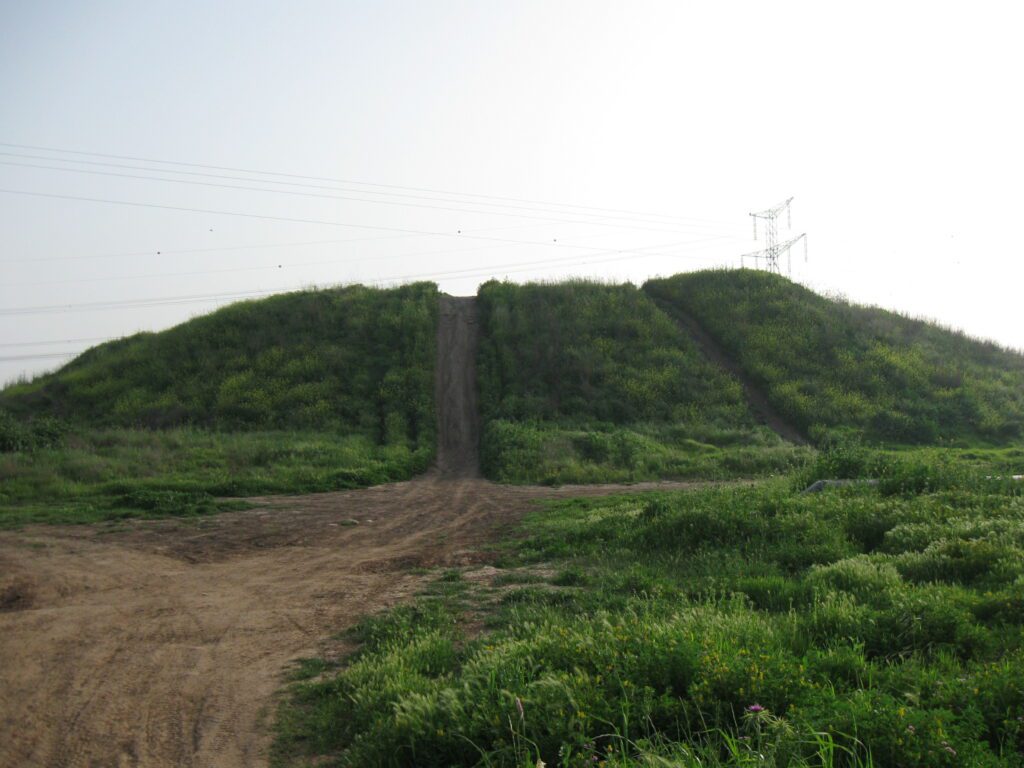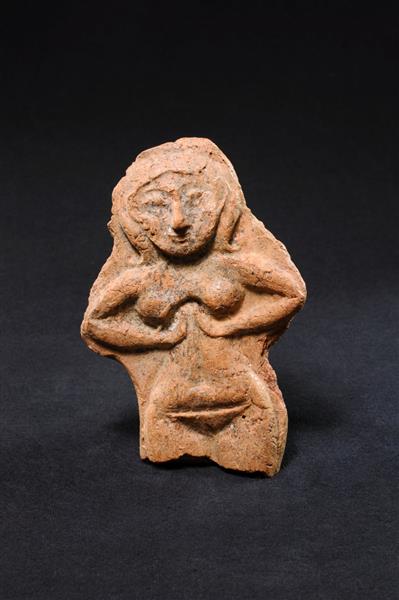Tel Zeror (Khirbet et-Tell Dhurur) is located in the Sharon Plain, south of the confluence of the Haviva, Hadera, and ‘Iron streams, near the Beit Eliezer neighborhood in Hadera. The site is divided between two peaks, separated by a saddle, with an ancient cemetery to the west. Archaeological evidence shows continuous habitation from the Middle Bronze Age to the Mamluk period. The findings suggest that it was one of the most important cities in the Sharon region in ancient times.
Among the unique discoveries at Tel Zeror are: A bowl inscribed in Aramaic with the words “…belonging to Elsamakh”; Figurines of the Canaanite gods Ashtoreth and Resheph; A storage jar bearing the Hebrew letter “Nun.”

Identifications and Excavations
Benjamin Mazar and Nadav Na’aman identified Tel Zeror with the city “Durur,” mentioned in the city lists of Pharaoh Thutmose III (15th century BCE). Yohanan Aharoni suggested that the site could be identified with the city “Migdol,” also listed in these records, and similarly, a place named “Migdol-Yeno” appears in the lists of his son, Amenhotep II.
Tel Zeror is notable for being the first tel excavated in the Sharon region. In 1928, British archaeologist John Garstang conducted an initial trench excavation at the site. From 1964 to 1967, the tel was excavated by a team from the Japan Society for Near Eastern Studies, led by K. Ohata and Moshe Kochavi. The fourth excavation season took place in 1974. In 2018, a salvage excavation was conducted by the Israel Antiquities Authority, led by Dor Golan and Daniel Ein Mor.
The historical reconstruction presented here is largely based on Moshe Kochavi’s interpretations of the 1970s excavations, published in the 1990s.
Middle and Late Bronze Age at Tel Zeror
The settlement at Tel Zeror began in the Middle Bronze Age II (2000-1800 BCE). The settlement covered an area of about 50 dunams and was fortified with 5-meter-thick walls built on top of earthen embankments. On the western side, an excavated moat, likely filled with water, served as a defensive trench. Remnants of a tower within the wall were also discovered on this side. The excavators suggest that this period marked the peak of the city’s prosperity and expansion, in line with the broader urbanization trend in the region.
Most findings from the Late Bronze Age were uncovered on the southern summit of the settlement. A section of a public building, believed by the excavators to be a palace of a local ruler, was found and was abandoned in the 13th century BCE. On the southern slope of the city, remains of a copper production facility were discovered, including numerous smelting furnaces and slag (waste produced during smelting). The significant presence of Cypriot pottery, likely brought along with the metal raw material, indicates extensive international trade.
Iron Age at Tel Zeror
Excavators attribute the Iron Age settlement at Tel Zeror to the arrival of Israelite settlers. From this period, pits were found dug into the remains of the palace associated with the Late Bronze Age. These pits primarily contained bones of kosher animals and pottery typical of Israelite settlements from the 13th-12th centuries BCE (Iron Age IA). Approximately ten tombs are also attributed to this period.
In the 11th century BCE (Iron Age IB), a fortress was built in the city. Family tombs from this time were found covered with stone slabs, containing rich burial offerings including figurines and Philistine pottery. The excavators suggest that this cemetery belonged to the “Sikils” (one of the Sea Peoples), whose capital was at Dor, about 20 kilometers from Tel Zeror. A figurine of the goddess Ashtoreth was also discovered from this period.

Female figurine (the goddess Ashtoreth?), from the Iron Age 1 period in Tel Zeror. Size: 10-6 cm. From Ohata K (ed) 1967. Tel Zeror. Vol. II. Japan, Pl. XLVII. (Israeli Antiquities Authority).
From Iron Age II (8th-9th centuries BCE), houses built in the four-room style and surrounded by a relatively thin wall were found on the northern summit of the tel. During this period, the inhabitants likely suffered from Aramean and Assyrian raids, leading to destruction and ruin. Unique findings from this time include a bowl inscribed with “…ba’al L’alsamech” in Aramaic, a figurine of the Canaanite god Resheph, and a storage jar bearing the Hebrew letter “N.”
The Iron Age city was probably destroyed during the campaigns of the Assyrian kings in 732 or 720 BCE.
Later Periods at Tel Zeror
Pottery from the Persian period was discovered in the northern part of the site. During the Hellenistic period, a farmhouse was located on the northern slope, with several agricultural installations found. From the Roman period, a watchtower was found at Tel Zeror, likely serving as an early warning station for the city of Caesarea against threats. Tombs from the Hellenistic and early Roman periods were also discovered in the area.
During the Byzantine period, it appears the site was abandoned, and its inhabitants moved to a nearby tel. In the Mamluk period, a village was established at the site, which lasted until the Ottoman period.
Sources:
Kochavi, M .Zeror, Tell. In Stern, E. (ED). 1993.. Encyclopedia of Archeological Excavations in the Holy Land. Vol 4. Pp 1524-1526 The Israel Exploration Society. Carta. Jerusalem.
Golan, D, and Ein Mor, D. Tel Zeror: Preliminary report. Hadashot Arkheologiyot 133.
Ohata K., 1964, Japanese expedition excavating at Tel Zeror. Hadashot Arkheologiyot 11. pp. 21-23 (Hebrew)
Ohata K., 1966, Second season of excavations at Tel Zeror. Hadashot Arkheologiyot 16. pp. 6-8 (Hebrew)
Ohata K., 1964, The third season of Tel Zeror’s excacvations. Hadashot Arkheologiyot 20. pp. 13-16 (Hebrew)


